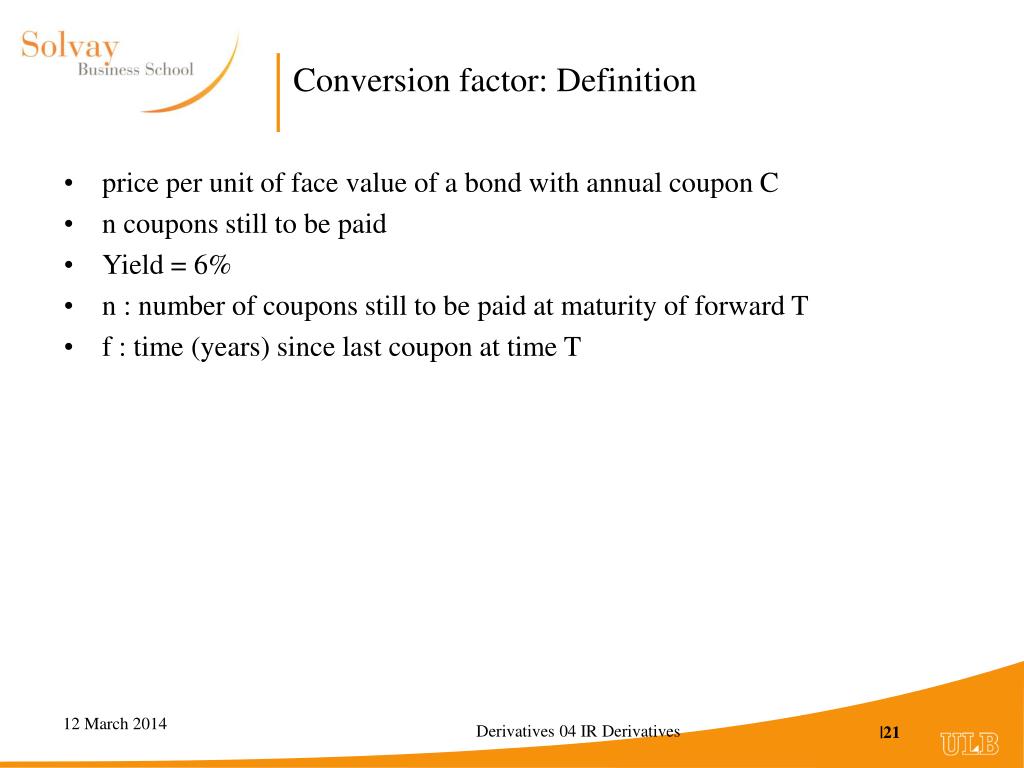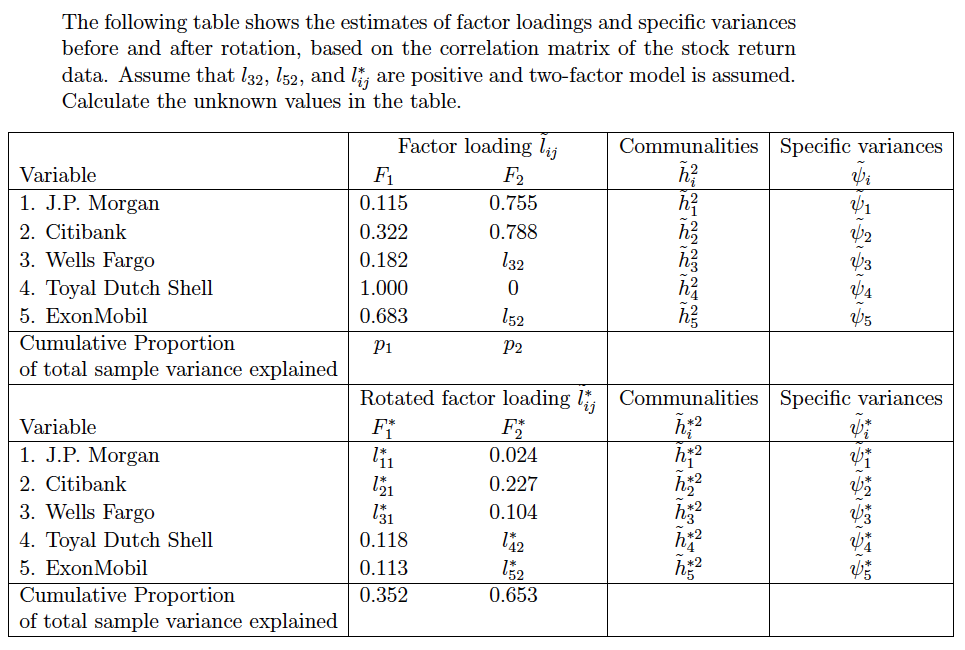Analysis of Bond Futures
- Download Bond Conversion Factor Formula Backstage Formula
- How To Conversion Factor
- Download Bond Conversion Factor Formula Backstage Present Value
- Conversion Factor Bond
A factor used to equate the price of T-bond and T-note futures contracts with the various cash T-bonds and T-notes eligible for delivery. This factor is based on the relationship of the cash. Conversion factor of bond delivered =1.3800Accrued interest on bond =3.00Price received for bond is1.380090.00+3.00 = $127.20per $100 of principal Conversion FactorThe conversion factor for a bond isapproximately equal to the value of thebond on the assumption that the yield curveis flat at 6% with semiannual compounding Cheapest to deliver Bond.
The following example demonstrates analyzing German Euro-Bundfutures traded on Eurex. However, convfactor, bndfutprice,and bndfutimprepo apply to bond futures in theU.S., U.K., Germany, and Japan. The workflow for this analysis is:

This MATLAB function computes a conversion factor for a bond futures contract. Calculating Bond Conversion Factors. Use conversion factors to normalize the price of a particular bond for delivery in a futures contract. When using conversion factors, the assumption is that a bond for delivery has a 6% coupon. Use convfactor to calculate conversion factors for all bond futures from the U.S., Germany, Japan, and U.K.
Calculate bond conversion factors.
Calculate implied repo rates to find the CTD bond.
Price the bond future using the term implied reporate.
Calculating Bond Conversion Factors
Use conversion factors to normalize the price of a particularbond for delivery in a futures contract. When using conversion factors,the assumption is that a bond for delivery has a 6% coupon. Use convfactor to calculate conversion factorsfor all bond futures from the U.S., Germany, Japan, and U.K.
For example, conversion factors for Euro-Bund futures on Eurex are listed at www.eurexchange.com. The delivery date for Euro-Bund futures is the 10th day of the month, as opposed to bond futures in the U.S., where the short position has the option of choosing when to deliver the bond.
For the 4% bond, compute the conversion factor with:

This syntax for convfactor works fine forbonds with standard coupon periods. However, some deliverable bondshave long or short first coupon periods. Compute the conversion factorsfor such bonds using the optional input parameters StartDate and FirstCouponDate. Specify all optional input arguments for convfactor asparameter/value pairs:
Calculating Implied Repo Rates to Find the CTD Bond
To determine the availability of the cheapest bond for deliverablebonds against a futures contract, compute the implied repo rate foreach bond. The bond with the highest repo rate is the cheapest becauseit has the lowest initial value, thus yielding a higher return, providedyou deliver it with the stated futures price. Use bndfutimprepo to calculate repo rates:
Pricing Bond Futures Using the Term Implied Repo Rate
Use bndfutprice to performprice calculations for all bond futures from the U.S., Germany, Japan,and U.K. To price the bond, given a term repo rate:
See Also
bnddurp | bnddury | bndfutimprepo | bndfutprice | convfactor | tfutbyprice | tfutbyyield | tfutimprepo | tfutpricebyrepo | tfutyieldbyrepo
Related Examples
More About
Reference dates for which conversion factor is computed (usually the first day of delivery months), specified as an N-by-1 vector of serial date numbers.
Data Types: double
Maturity date, specified as a N-by-1 vector of serial date numbers.


Data Types: double
CouponRate — Annual coupon rates for underlying bond
vector in decimals
Annual coupon rates for underlying bond, specified as an numBonds-by-1 vector in decimals.
Data Types: double
Name-Value Pair Arguments
Download Bond Conversion Factor Formula Backstage Formula
Specify optional comma-separated pairs of Name,Value arguments. Name is the argument name and Value is the corresponding value. Name must appear inside quotes. You can specify several name and value pair arguments in any order as Name1,Value1,...,NameN,ValueN.
CF = convfactor(RefDate,Maturity,CouponRate,'Convention',2)'Convention' — Conversion factor convention
1 US Treasury bond (30-year) and Treasury note (10-year) futures contract (default) | integer from 1 to 5
Conversion factor convention, specified as the comma-separated pair consisting of 'Convention' and a N-by-1 vector using the following values:
1= US Treasury bond (30-year) and Treasury note (10-year) futures contract2= US 2-year and 5-year Treasury note futures contract3= German Bobl, Bund, Buxl, and Schatz4= UK gilts5= Japanese Government Bonds (JGBs)
How To Conversion Factor
Data Types: double
'FirstCouponDate' — Irregular first coupon date
serial date number
Irregular first coupon date, specified as the comma-separated pair consisting of 'FirstCouponDate' and a N-by-1 vector using a serial date numbers.
Download Bond Conversion Factor Formula Backstage Present Value
Data Types: double
'RefYield' — Reference semiannual yield
0.06 (6%) (default) | vector in decimals
Reference semiannual yield, specified as the comma-separated pair consisting of 'RefYield' and an N-by-1 vector in decimals.
Data Types: double
'StartDate' — Forward starting date of payments
serial date number
Forward starting date of payments, specified as the comma-separated pair consisting of 'StartDate' and a N-by-1 vector using serial date numbers.
Conversion Factor Bond
Data Types: double
